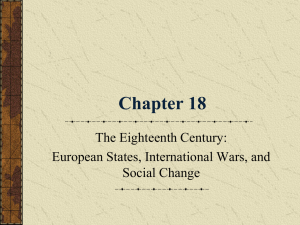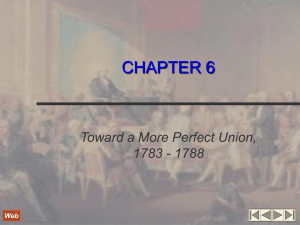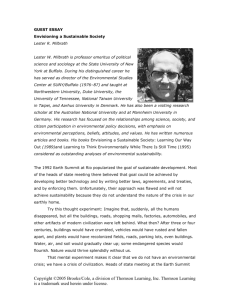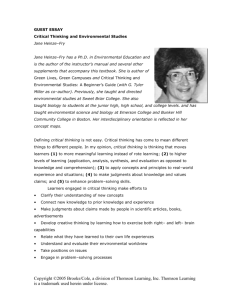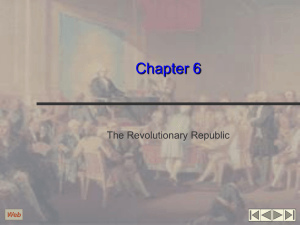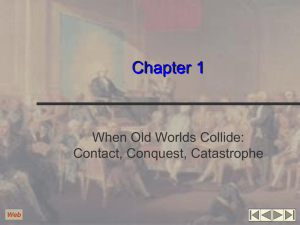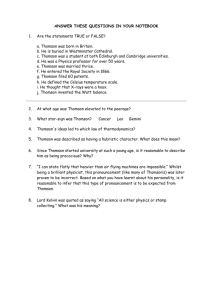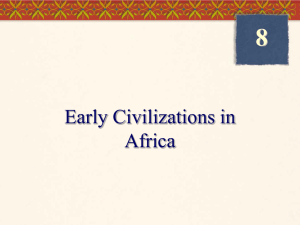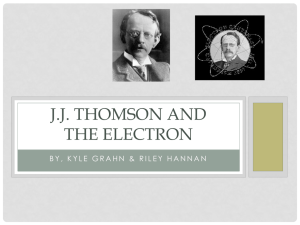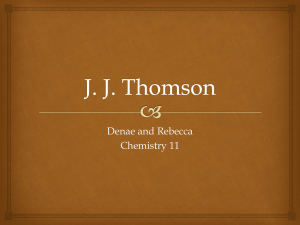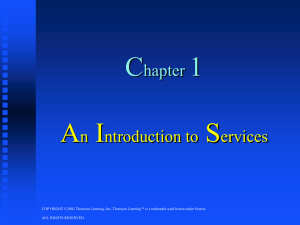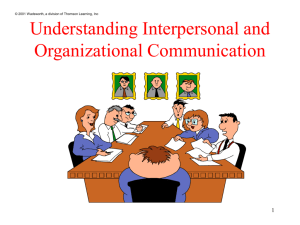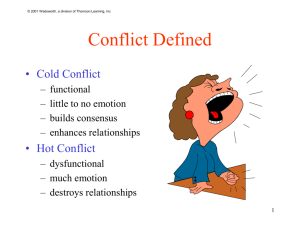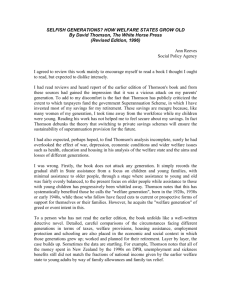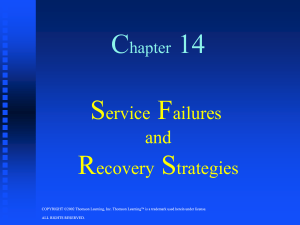Precontact Native Americans
advertisement
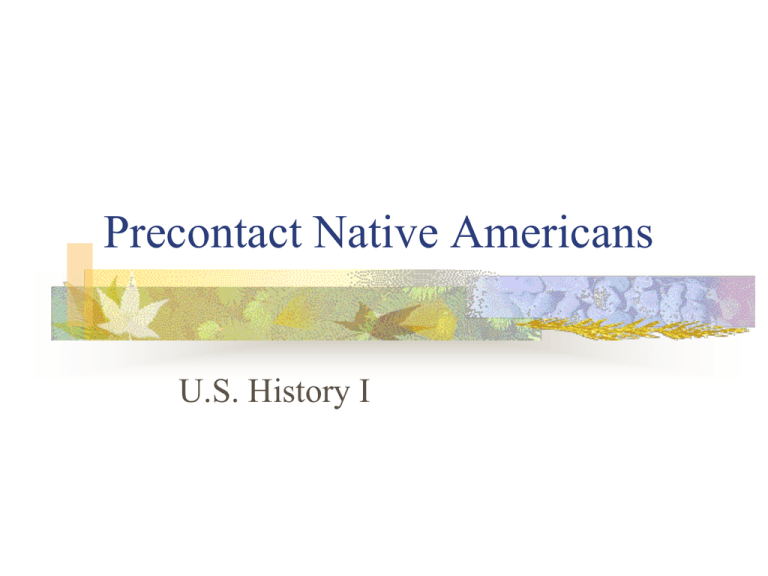
Precontact Native Americans U.S. History I The First Immigrants to America Siberian hunters crossed “Beringia” before 12,000 BCE & spread southwards Ice Age lowered sea level about 350 feet, exposing land under Bering Sea Siberians hunting wooly mammoths, mastadons, etc. followed them across to Alaska Quickly killed off large mammals included horses & camels thus only dogs & llamas domesticated Others may have crossed by sea from Asia or SW Europe Peopled both continents by 10,000 BCE Copyright 2001, A.B. Longman Mesoamerican Civilizations ©2004 Wadsworth, a division of Thomson Learning, Inc. Thomson Learning™ is a trademark used herein under license. Agriculture began in Mesoamerica 5000 BCE Olmecs & Zapotecs (1st millenium BCE) Teotihuacán (300 BCE 800 CE) Ruins of Teotihuacán Maize, beans & squash 150,000 people living in stucco apartment complexes Temple of the Sun over 200’ high Trade in cocoa, rubber, feathers, obsidian & pulque The Mayan Civilization 3 million population on the Yucatan peninsula City-states ruled by powerful kings Polytheistic religion Human sacrifice Ceremonial ball game Developed hieroglyphics Overcultivation coupled with prolonged drought led to collapse of southern cities in 9th – 10th centuries New urban centers in northern Yucatan flourished under Toltecs Mayan pyramid at Uxmal Mayan Glyphs carved on wall at Palenque, Mexico ©2004 Wadsworth, a division of Thomson Learning, Inc. Thomson Learning™ is a trademark used herein under license. Mayan Pyramid at Chichen-Itza ©2004 Wadsworth, a division of Thomson Learning, Inc. Thomson Learning™ is a trademark used herein under license. The Aztecs Mexica (Aztecs) migrated from the northwest (Land of Aztlán) Politics and society: ©2004 Wadsworth, a division of Thomson Learning, Inc. Thomson Learning™ is a trademark used herein under license. Founded Tenochtitlán on island in Lake Texcoco Monarch had both divine and secular responsibilities Hereditary nobility trained in harsh temple schools Commoners belonged to calpulli (kinship group) headed by elected chief Held land in common & maintained temples & schools Responsible for taxes and conscription Women could own property & make contracts, but not equal to men Aztec Religion and Culture Polytheistic religion: Ometeotl = all-powerful creator god Huitzilopochtli = sun god; protector of Aztec people Quetzalcoatl = feather serpent god of learning; left in 10th century but destined to return one day Fatalistic religion – believed world had been created & destroyed 4 times Human sacrifice necessary to prevent 5th destruction of world Impressive art and sculpture Aztec Calendar Stone Examples of early South American ceramics (6th - 9th centuries, Peru) ©2004 Wadsworth, a division of Thomson Learning, Inc. Thomson Learning™ is a trademark used herein under license. ©2004 Wadsworth, a division of Thomson Learning, Inc. Thomson Learning™ is a trademark used herein under license. The Inca Empire Inca Empire est. by Pachakuti in 1440s Highly centralized gov’t ©2004 Wadsworth, a division of Thomson Learning, Inc. Thomson Learning™ is a trademark used herein under license. Forced labor used to build: Provinces & districts had equal numbers of residents Governors members of royal family Collective farming under state control cities like Cuzco & Machu Picchu 24,800 miles of roads with rest houses, storage depots & suspension bridges 20,000-man army raised by universal conscription No writing, but system of knotted strings (quipu) served as mnemonic devices for messengers Peoples of North America ©2004 Wadsworth, a division of Thomson Learning, Inc. Thomson Learning™ is a trademark used herein under license. Agriculture & pottery entered North America around 2000 BCE Hohokam & Anasazi (Pueblo) culture flourished in Southwest from 700 – 1300 CE Bandelier, NM Irrigation to grow crops Clay & timber buildings Adena & Hopewell cultures in Ohio & Illinois River valleys, 100 BCE – 400 CE Mississippian chiefdoms flourished in Southeast between 700 – 1500 CE Mississippian Culture (700 – 1300) Cahokia: city of 20,000 at its height (1100-1200 CE) Artist’s conception of Cahokia Central city enclosed by wooden stockade nearly 6 square miles Central plaza covered 50 acres “Monks Mound” - 100 feet high, topped with large palace/temple “Woodhenge” – circles of wooden posts served as calendar to mark solstices & equinoxes Climate change &drought led to dwindling population after 1200 – abandoned by 1400 Native North American Cultures Eastern Woodlands Algonquian – Wampanoag, Mahican, Lenni Lenape, Powhatans Iriquoian – 5 Nations, Hurons, Susquehannocks, Cherokee Muskogean – Creek, Chickasaw, Choctaw Great Plains Sedentary farmers – Mandans, Hidatsas Nomadic buffalo hunters – Sioux, Crow, Comanche Southwestern Athapascans - Apache & Navajo Pacific Northwest Chinook, Salish Eastern Woodlands Culture Matrilineal descent Clans & villages were primary identity, not tribes Wars fought for 2 reasons: Husband joined wife’s clan Iriquois women chose chiefs Algonquin women could be chiefs Make other village pay tribute Gain captives to be adopted (requickening) No written language European diseases spread ahead of contact through trade Algonquian Village 17th Century European Society Mostly small agricultural communities based on nuclear families Society tied together by cooperation between neighbors and patronage & deference between nobles & commoners Young marriage age & large families No “generation gap” Nobles owed patronage to commoners Commoners owed deference to nobles Supernatural still credible Violence & death very common Pre-capitalist economic order Intercultural Exchange Indians & Europeans met on “middle ground,” but Europeans had the upper hand Iriquois Wampum Belts Communication problems not just due to language - sometimes same concept had different meanings in different cultures Indians tried to use Europeans as allies, or play one group off another some accepted Christianity, but almost all rejected imposition of culture “Father” was benevolent figure for Indians, authoritarian for Europeans Indians understood land ownership as usufruct rights, not exclusive ownership Each learned others’ customs, but appropriated for their own use wampum became money for some European colonists Indians gave new meanings & uses to European trade goods
